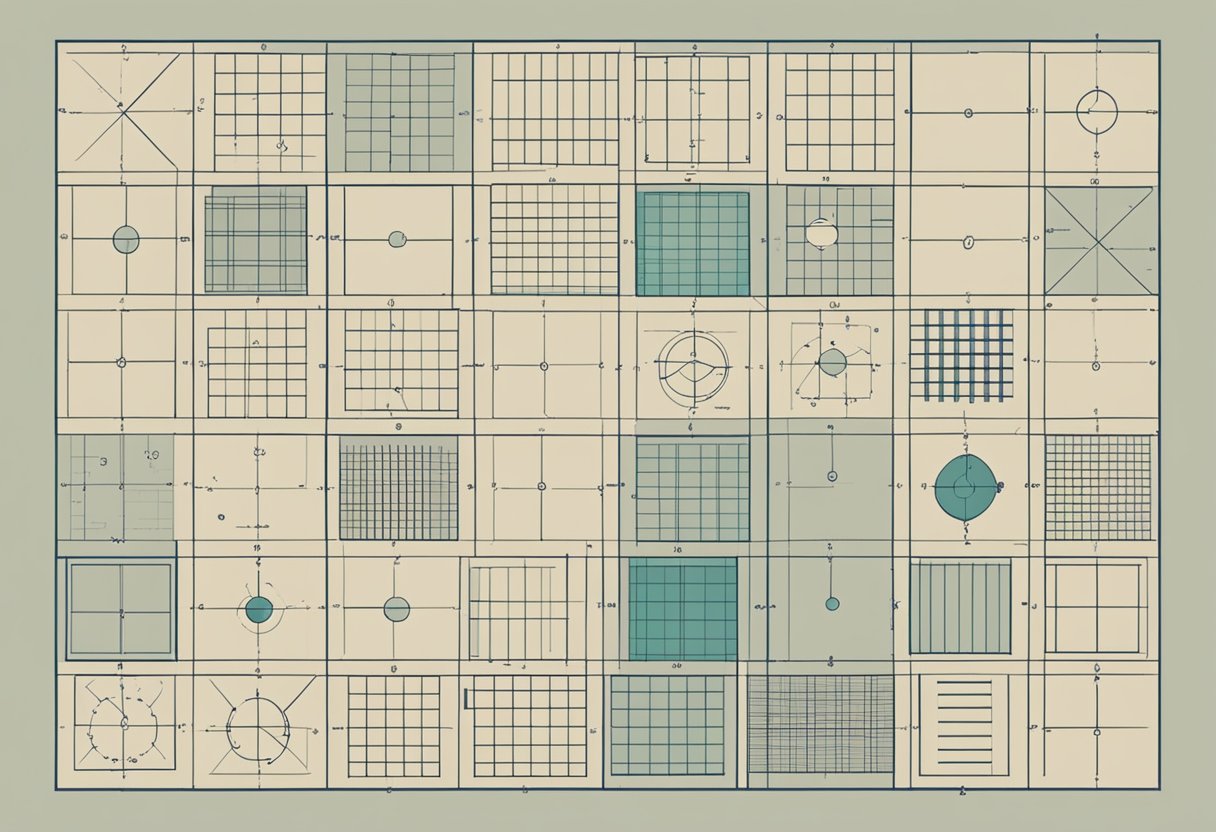Types Of Positions
Positions refer to the physical placement or arrangement of objects or people. In various fields, positions are essential to achieving specific goals and objectives. There are different types of positions, each with its unique characteristics, roles, and responsibilities. Understanding the different types of positions can help individuals make informed decisions about their career paths or improve their skills in a particular field.
In general, positions can be classified into two categories: physical positions and organizational positions. Physical positions refer to the body’s placement and movement in space, such as standing, sitting, or lying down. Organizational positions, on the other hand, refer to the roles and responsibilities assigned to individuals in a company or organization. These positions may include top-level executives, middle managers, and entry-level employees.
Key Takeaways
- Positions can be classified into physical and organizational positions.
- Physical positions refer to the body’s placement and movement, while organizational positions refer to roles and responsibilities assigned to individuals in a company or organization.
- Understanding the different types of positions can help individuals make informed decisions about their career paths or improve their skills in a particular field.
Fundamentals of Positioning

When designing a webpage, it is important to understand the different types of positioning available in CSS. Positioning refers to the placement of an element on a webpage. There are several types of positioning available in CSS, including absolute, relative, fixed, and sticky positions.
Understanding Absolute and Relative Positioning
Absolute positioning allows an element to be positioned relative to its nearest positioned ancestor. This means that if an element is inside a container that has a position property set, the element will be positioned relative to that container. If no container has a position property set, the element will be positioned relative to the body element.
Relative positioning, on the other hand, positions an element relative to its current position on the page. This means that if an element has a relative position, it will be positioned relative to its original position on the page.
Exploring Static, Fixed, and Sticky Positions
Static positioning is the default positioning for all HTML elements. This means that if no position property is set, the element will be positioned in its normal position on the page.
Fixed positioning allows an element to be positioned relative to the browser window. This means that if an element has a fixed position, it will remain in the same position on the page even if the user scrolls up or down.
Sticky positioning is a newer type of positioning that allows an element to be positioned relative to its nearest scrolling ancestor. This means that if an element has a sticky position, it will remain in the same position on the page until it reaches the edge of its container, at which point it will become fixed.
In CSS, the position property is used to set the positioning of an element. The position property can take four values: static, relative, absolute, and fixed. Additionally, the -webkit-sticky property can be used to set a sticky position in WebKit-based browsers.
Understanding the different types of positioning available in CSS is essential for creating well-designed webpages. By using the correct positioning properties, designers can ensure that their elements are positioned correctly and behave as intended.
Positions in Web Design
Web design is a field that involves creating and maintaining websites. There are several positions available in web design, each with its own unique set of skills and responsibilities. In this section, we will explore two important aspects of web design: CSS layouts and manipulating display, background, and color.
The Role of CSS in Layouts
CSS (Cascading Style Sheets) is a language used to describe the presentation of a document written in HTML. It is used to create visually appealing layouts and styles for web pages. In web design, CSS is used to control the layout of a page, including its top, bottom, left, and right margins, as well as its height and width.
Web designers use CSS to create responsive layouts that adapt to different screen sizes. This is important because mobile devices have become increasingly popular in recent years, and websites need to be designed to work well on these devices. By using CSS, web designers can create layouts that adjust to the size of the viewport, ensuring that the website looks good on any device.
Manipulating Display, Background, and Color
Web designers also use CSS to manipulate the display, background, and color of a web page. Display refers to how an element is displayed on a page, such as whether it is displayed as a block element or an inline element. Background refers to the background color or image of an element, while color refers to the text color of an element.
Web designers can use CSS to create visually appealing designs by manipulating these properties. For example, they can use background images to create interesting textures or patterns, or they can use different colors to create contrast and draw attention to important elements on the page.
In conclusion, web design is a complex field that requires a variety of skills and knowledge. By understanding the role of CSS in layouts and how to manipulate display, background, and color, web designers can create visually appealing and functional websites that work well on any device.
ual Health and Intimacy
Exploring Different Positions
ual health and intimacy are important aspects of a person’s life. It is essential to explore different positions to keep the spark alive in a relationship. Trying out new positions can help individuals discover what they enjoy and what they don’t. It can also help partners communicate better and understand each other’s needs.
There are various positions that individuals can try, depending on their preferences and comfort level. Some popular positions include missionary, doggy style, cowgirl, and spooning. It is essential to remember that not everyone likes the same positions, and it is okay to experiment and find what works best for you.
Using Toys to Enhance Pleasure
toys can be a great addition to any ual experience, whether alone or with a partner. They can help individuals explore their bodies and find what feels good. Some popular toys include vibrators, dildos, and butt plugs.
Using toys can enhance pleasure and add a new dimension to ual experiences. It is important to choose the right toy for you and your partner and to communicate openly about what you like and don’t like. It is also important to clean and store toys properly to avoid infections and prolong their lifespan.
In conclusion, ual health and intimacy are important aspects of a person’s life. Exploring different positions and using toys can help individuals discover what they enjoy and enhance their ual experiences. It is essential to communicate openly with partners and to prioritize safety and hygiene when using toys.
Corporate Hierarchy and Roles
Positions in a Company
Every business or company has a unique organizational structure that outlines the different positions and roles within the organization. These positions range from entry-level roles to executive-level positions. Understanding the hierarchy of positions in a company is essential for employees to know their career path and for employers to create a clear progression plan for their staff.
The most common positions in a company are entry-level positions, which include interns, assistants, and associates. These roles are usually responsible for completing routine tasks and providing support to other team members. Mid-level positions include managers, supervisors, and team leaders. These roles are responsible for overseeing the work of entry-level employees and ensuring that tasks are completed efficiently and effectively. Executive-level positions include chief executive officers (CEOs), chief information officers (CIOs), and chief financial officers (CFOs). These roles are responsible for the overall strategic direction of the company and making high-level decisions.
Leadership Roles: From Intern to CIO
Leadership roles in a company are crucial for the success of the business. These roles require a high level of responsibility and accountability. From an intern to a CIO, every leadership role has its unique set of responsibilities.
An intern is an entry-level employee who is usually in the process of completing their studies. They are responsible for completing tasks assigned to them by their supervisors and gaining experience in their field of study. As they gain experience, they may move up the ladder to become an associate or assistant.
A manager is a mid-level position responsible for overseeing the work of other employees. They are responsible for ensuring that tasks are completed efficiently and effectively. They also provide feedback to their team members and work with senior management to develop strategies for the company.
A CIO is an executive-level position responsible for the overall management of the company’s information technology (IT) systems. They are responsible for ensuring that the company’s IT infrastructure is secure and efficient. They also work with other executives to develop strategies for the company’s growth and success.
In conclusion, understanding the different positions and roles within a company is essential for both employees and employers. It provides employees with a clear career path, and employers can create a clear progression plan for their staff. Leadership roles are crucial for the success of the business, and each role has its unique set of responsibilities.
Physical Positions and Movements
The Importance of Posture
Posture refers to the way in which a person holds their body when standing, sitting, or lying down. Good posture is essential for maintaining a healthy spine and preventing back pain. Poor posture can lead to muscle strain, joint pain, and other health problems.
Maintaining good posture can also have psychological benefits. Studies have shown that people who sit or stand up straight are more confident and have higher self-esteem than those who slouch or hunch over.
Different Physical Poses and Their Benefits
There are several different physical poses that people can adopt, each with its own benefits.
Standing
Standing is the most natural position for the human body. It helps to maintain good posture and can improve circulation. However, standing for long periods can lead to muscle fatigue and back pain.
Sitting
Sitting is a common position for many people, especially those who work in offices. It is important to maintain good posture when sitting to prevent back pain. A chair with good lumbar support can help to maintain good posture.
Lying
Lying down is a good position for the body to rest and recover. It can help to relieve pressure on the spine and reduce muscle tension. However, it is important to use a supportive mattress and pillow to maintain good spinal alignment.
Kneeling
Kneeling is a position that can be used for prayer or meditation. It can help to improve flexibility and balance, but it can also put pressure on the knees and lower back.
Squatting
Squatting is a position that is commonly used in many cultures around the world. It can help to improve hip mobility and strengthen the legs. However, it can also put pressure on the knees and lower back.
Poses
Yoga and other forms of exercise often involve various physical poses. These poses can help to improve flexibility, strength, and balance. It is important to use proper form and technique to prevent injury.
In conclusion, maintaining good posture and adopting different physical poses can have numerous benefits for the body and mind. It is important to use proper form and technique to prevent injury and to consult a healthcare professional before starting any new exercise program.






